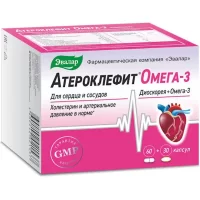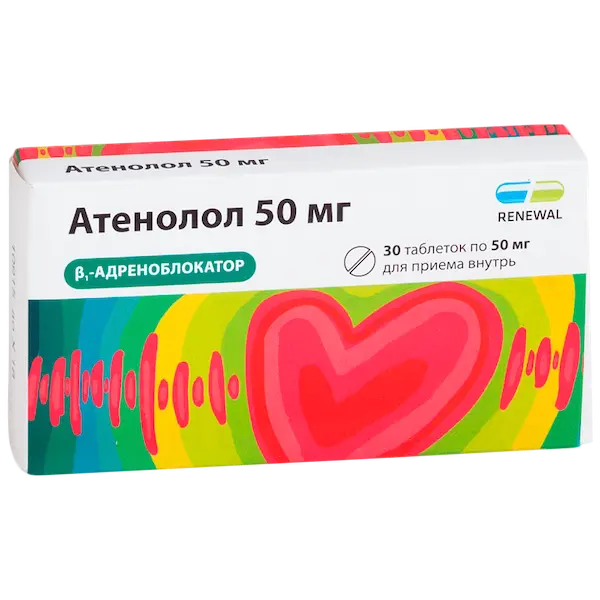Description
Perindopril+Indapamide Pharmacodynamics
Combined hypotensive drug containing angiotensin-converting enzyme (ACE) inhibitor – perindopril and thiazide-like diuretic – indapamide. The drug has antihypertensive, diuretic and vasodilatory effects.
Perindopril PLUS Indapamide has a pronounced dose-dependent antihypertensive effect, independent of the age and body position of the patient and not accompanied by reflex tachycardia. Does not affect lipid metabolism (total cholesterol, low-density lipoproteins (LDL), very low-density lipoproteins (VLDL), high-density lipoproteins (HDL), triglycerides (TG) and carbohydrates), including in diabetic patients. Reduces the risk of hypokalemia due to monotherapy with a diuretic.
The hypotensive effect persists for 24 hours.
Stable decrease in blood pressure (BP) is achieved within 1 month during the use of Perindopril PLUS Indapamide without an increase in heart rate (HR). Discontinuation of treatment does not lead to development of “withdrawal” syndrome.
Perindopril is an ACE inhibitor, whose mechanism of action is related to the inhibition of ACE activity, which leads to a decrease in angiotensin II formation, eliminates the vasoconstrictor effect of angiotensin II, reduces aldosterone secretion. The use of perindopril does not lead to retention of sodium and fluid, does not cause reflex tachycardia during long-term treatment. Hypotensive effect of perindopril develops in patients with low or normal plasma renin activity. Perindopril acts through its main active metabolite, perindoprilat. Its other metabolites are inactive.
The action of perindopril leads to vein dilation (reduction of cardiac preload) due to changes in prostaglandin metabolism; reduction of total peripheral vascular resistance (TPR) (reduction of cardiac postload).
In patients with heart failure perindopril promotes reduction of left and right ventricular filling pressures; increase of cardiac output and cardiac index; increase of regional blood flow in muscles.
Perindopril is effective in arterial hypertension of any severity: mild, moderate and severe.
The maximum hypotensive effect develops 4-6 hours after a single oral administration and lasts for 24 hours.
Discontinuation of therapy does not lead to the development of “withdrawal” syndrome.
It has vasodilator properties and restores elasticity of large arteries. Addition of a thiazide-like diuretic enhances the hypotensive (additive) effect of perindopril.
Indapamide refers to sulfonamide derivatives and is a diuretic. It inhibits sodium reabsorption in the cortical segment of the renal tubules, increasing renal excretion of sodium and chlorine, thus resulting in increased diuresis. To a lesser extent increases potassium and magnesium excretion. Having the ability to selectively block slow calcium channels, indapamide increases elasticity of arterial walls and reduces PPS. It has antihypertensive effect in doses that do not have a pronounced diuretic effect. Increasing the dose of indapamide does not increase the hypotensive effect, but increases the risk of adverse events. Indapamide in patients with arterial hypertension has no effect on lipid metabolism – TG, LDL and HDL; on carbohydrate metabolism, even in patients with diabetes mellitus and arterial hypertension.
Indications
Essential arterial hypertension (in patients who are indicated for combination therapy).
Contraindications
-Perindopril
– Hypersensitivity to perindopril and other ACE inhibitors;
– History of angioedema (Quincke’s edema) associated with ACE inhibitor administration;
– hereditary/idiopathic angioedema;
– Bilateral stenosis of the renal arteries or stenosis of the artery of the single kidney;
– concomitant use of ACE inhibitors with aliskiren and aliskiren-containing drugs in patients with diabetes mellitus and renal impairment (creatinine clearance (CK) less than 60 ml/min);
– pregnancy;
– breastfeeding;
– Under 18 years of age (efficacy and safety have not been established).
Indapamide .
– Hypersensitivity to indapamide and other sulfonamide derivatives;
– Severe hepatic insufficiency (including with encephalopathy);
– hypokalemia;
– concomitant use with drugs that can cause “pirouette” arrhythmia;
– Pregnancy and breast-feeding;
– Under 18 years of age (efficacy and safety have not been established).
Perindopril PLUS Indapamide
– Hypersensitivity to excipients included in the drug;
– Severe renal insufficiency (CKR <30 ml/min);
– concomitant use with potassium-saving diuretics, potassium and lithium preparations, and in patients with hyperkalemia;
– concomitant use of drugs that prolong the QT interval due to lack of sufficient clinical experience Perindopril PLUS Indapamide should not be used in patients on hemodialysis, as well as in patients with untreated decompensated heart failure;
– under 18 years of age (efficacy and safety have not been established).
Dosage and administration method
- Administer orally once daily, preferably in the morning before breakfast, with plenty of fluids.
- Doses are given for indapamide/perindopril ratio.
- The starting dose of Perindopril PLUS Indapamide is 0.625 mg/2 mg (1 tablet) once daily. If after 1 month of taking the drug it is not possible to achieve adequate BP control, the drug dose should be increased to 1.25 mg/4 mg (1 tablet) once daily.
- Patients with renal insufficiency (CKD 60 ml/min or more) do not require dose adjustment. For patients with a CKR of 30-60 ml/min, the maximum dose of Perindopril PLUS Indapamide is 0.625 mg/2 mg (1 tablet) once daily, treatment should be started with perindopril and indapamide monotherapy dosing. Perindopril PLUS Indapamide is contraindicated if the CK is less than 30 ml/min (see section “Contraindications”).
- Patients with moderate hepatic impairment do not require dose adjustment. Perindopril PLUS Indapamide is contraindicated in patients with severe hepatic impairment.
- For elderly patients the initial dose of Perindopril PLUS Indapamide is 0.625 mg/2 mg (1 tablet) once daily.
- In elderly patients, before starting Perindopril PLUS Indapamide, renal function and plasma potassium content should be assessed. The initial dose of Perindopril PLUS Indapamide should be adjusted according to the degree of BP decrease, especially in case of decreased BOD and chronic heart failure (functional class IV according to NYHA classification). Such measures help to avoid a sharp decrease in BP.
- There is a risk of hypotension in all patients, but special caution should be exercised when using Perindopril PLUS Indapamide in patients with CHD and insufficiency of cerebral circulation. In such patients, treatment with the drug should be started with a dose of 0.625 mg/2 mg (initial dose).
- In patients with diagnosed or suspected renal artery stenosis, treatment with Perindopril PLUS Indapamide should be started in hospital with a dose of 0.625 mg/2 mg under monitoring of renal function and plasma potassium. Some patients may develop acute renal failure, which is reversible after drug withdrawal.
- In patients with chronic heart failure (functional class IV according to NYHA classification), treatment with Perindopril PLUS Indapamide should be started with an initial dose of 0.625 mg /2 mg under medical supervision.





